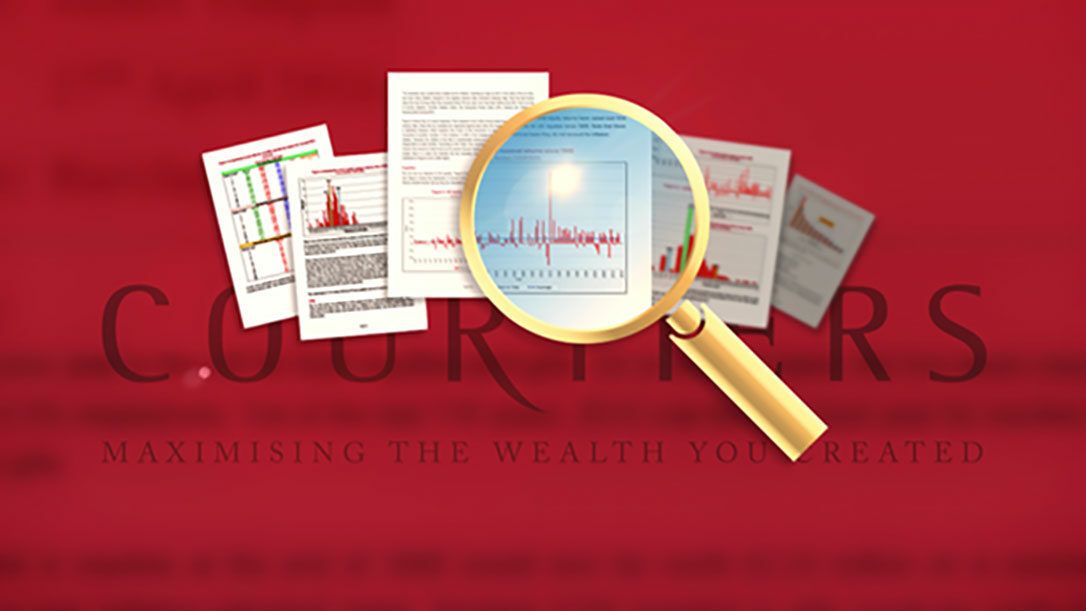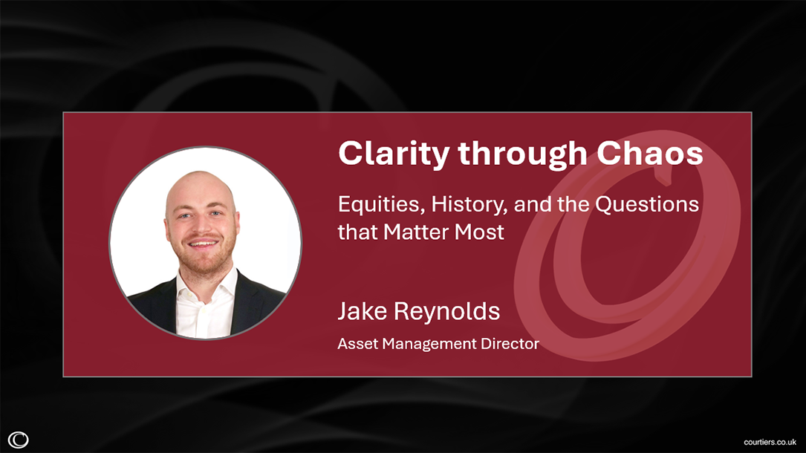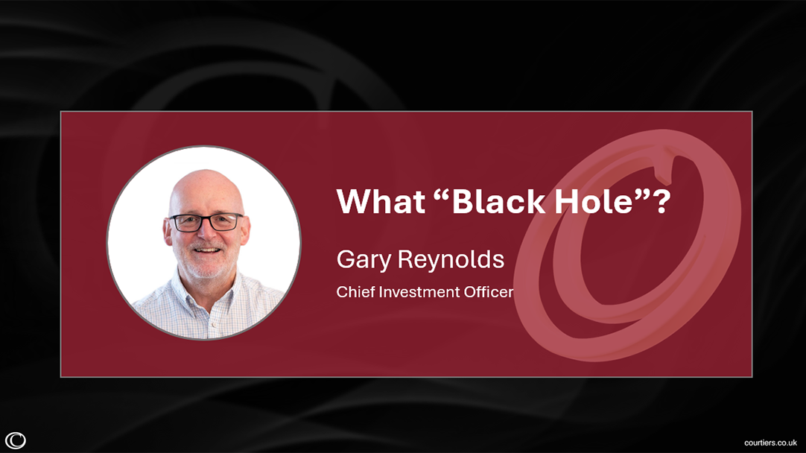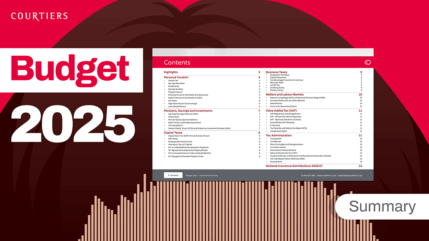News & Insights
Equities & Gilts
Transcript of video:
What exactly is the Barclays Equity Gilt Study?
The Barclays Equity Gilt Study has been running for around about sixty years now. I think last year was the sixty-first edition. It looks at the returns from the different asset classes over 116 years, so it goes back to 1899.
The benefit is that we can look and see how the different asset classes have performed over a very long period, which is the best guess we’ve got at estimating how they are likely to perform into the future.
It looks at the performance of three main asset classes. It looks at UK shares. It looks at UK government bonds (what we call gilts) and it looks at UK cash. It looks at their absolute returns i.e. how much did they go up by, and then how much did they move in relation to inflation?
What does it reveal about overall market return performance?
The performance figures from the study show that in the long term, equities outperform the other asset classes which is really what you would expect because if shares (equities) didn’t outperform the asset classes, then bearing in mind they go up and down an awful lot more than gilts or cash, if you didn’t get the outperformance no one would ever invest in them.
Over the very long term what they show is that equities give a real return adjusted for inflation of just under 5% per annum, and gilts give a real return of just over 1% per annum, whilst cash gives a real return adjusted for inflation of just under 1% per annum.
What the statistics also show is that equities are significantly more volatile in the short term, so you get an immense amount out of wobble in equity prices which we all instinctively know. Any investor that’s ever invested in shares understands that their prices go up and down. We measure that with standard deviation, or what we call volatility, and the volatility of shares is much higher than gilts.
If you look at the real returns, then once you get past the holding period of around eleven years, the real returns from equities are less volatile than the real returns from gilts, and that’s because of the effect that inflation has on the purchasing power of gilts versus equities.
Nominal return vs real return?
Nominal measures the change in the monetary value only, so if you invest £10 and it goes up to £16 then you’ve got a £6 return, which is 60% of your original £10.
Now, that original £10 may have purchased five cups of cappuccino at £2 a cup. If the price of the cappuccino doubles to £4, then although your £10 has gone to £16 it now only buys four cups of coffee.
Whilst you’ve had a 60% return ‘nominal’ in monetary value, you’ve had a 20% decline in the real value because your £16; although it’s higher than the £10; buys you less than it did when it was £10. That is the critical difference, and for investors they should always look at the real return, because what matters to any investor is not the value of the money, but what you can buy with it.
Is nominal return a common measure of performance?
When you look at performance statistics from the investment management industry, the figures you’re given are 99% of the time nominal returns.
Sometimes, they’ll be converted to real returns or inflation-adjusted, which is of course what happens with the Barclays Equity Gilt Study, but inflation-adjusted is what counts, and if you look at publications coming out from the Bank of England they are obsessive about the level of inflation, because they know how important it is with regard its effect on the economy and its effect on savers.
Now, the last time we had a real nasty bout of inflation was in the 1970s. If you’re a bond holder, and inflation as it did in the mid 70’s leaps to well over 20% then that is eroding your purchasing power. Because the nominal value of that bond that does not change, you lose that purchasing power forever.
Whilst the industry quotes nominal, and that is generally the benchmark imposed on us by the regulators, real return is what every investor should be obsessed about.
Does Courtiers guide its clients to view real returns?
We always focus on real returns because we know for our clients, whether it’s a small institution paying pensions in the future because it’s a pension fund, or a charity or a family, what matters to every client (whether they are institutional or individual) is what that money will purchase in the future.
Now, one of the unique tools that Courtiers uses is what we call our ISRRA – our Investment Strategy Risk and Return Analysis, and it forecasts the value of the client buying their goods and services into the future. In other words we adjust the future outgoings for inflation.
When we look at the long term perspective for a client, we automatically take account of inflation, and we have done for as long as we’ve had the ISRRA running. That’s a key part of the work that every Courtiers Adviser does, because our Advisers want to make sure that clients can maintain their standard of living in the future, and that means you’ve got to be able to pay the future pound price of goods, not the current one. We always look at that when looking at the forecasts.
Predicting future inflation
We can be flexible in what we use for future inflation, generally because the Bank of England works the inflation rate of 2%. That would be our default position, but in some cases you might have to make an allowance for inflation at a higher level, for example nursing home fees have inflated at a higher rate than ordinary inflation for quite some time.
Other items, such as cars, have not inflated at the same rate, so depending on what the client is projecting forward, we might adjust or nudge that assumed inflation rate to be as accurate as we possibly can be. Even then, what we do with the forecast is to look at the range of possible outcomes – what the best and what the worst may be, because predicting things forward into the long term financially is difficult, and the client needs to understand, the investor needs to understand, where they’ll stand if it’s a very good period or in particular if it’s a very bad period.
We look at the range of outcomes, but we can adjust that inflation rate depending on the type of lifestyle and what the client is buying with their money.
Warning – the views expressed by Courtiers in this summary and any video and video transcripts, are reached from our own research. Courtiers cannot accept responsibility for any decisions taken as a result of reading this document, watching the featured video or reading the video transcript and investors are recommended to take independent professional advice before effecting transactions. The price of stocks, shares and funds, and the income from them, may fall as well as rise. Past performance is not necessarily a guide to future returns.
We do not endorse nor accept responsibility for the content of any website not operated by Courtiers which you may visit by following a link from this article.












